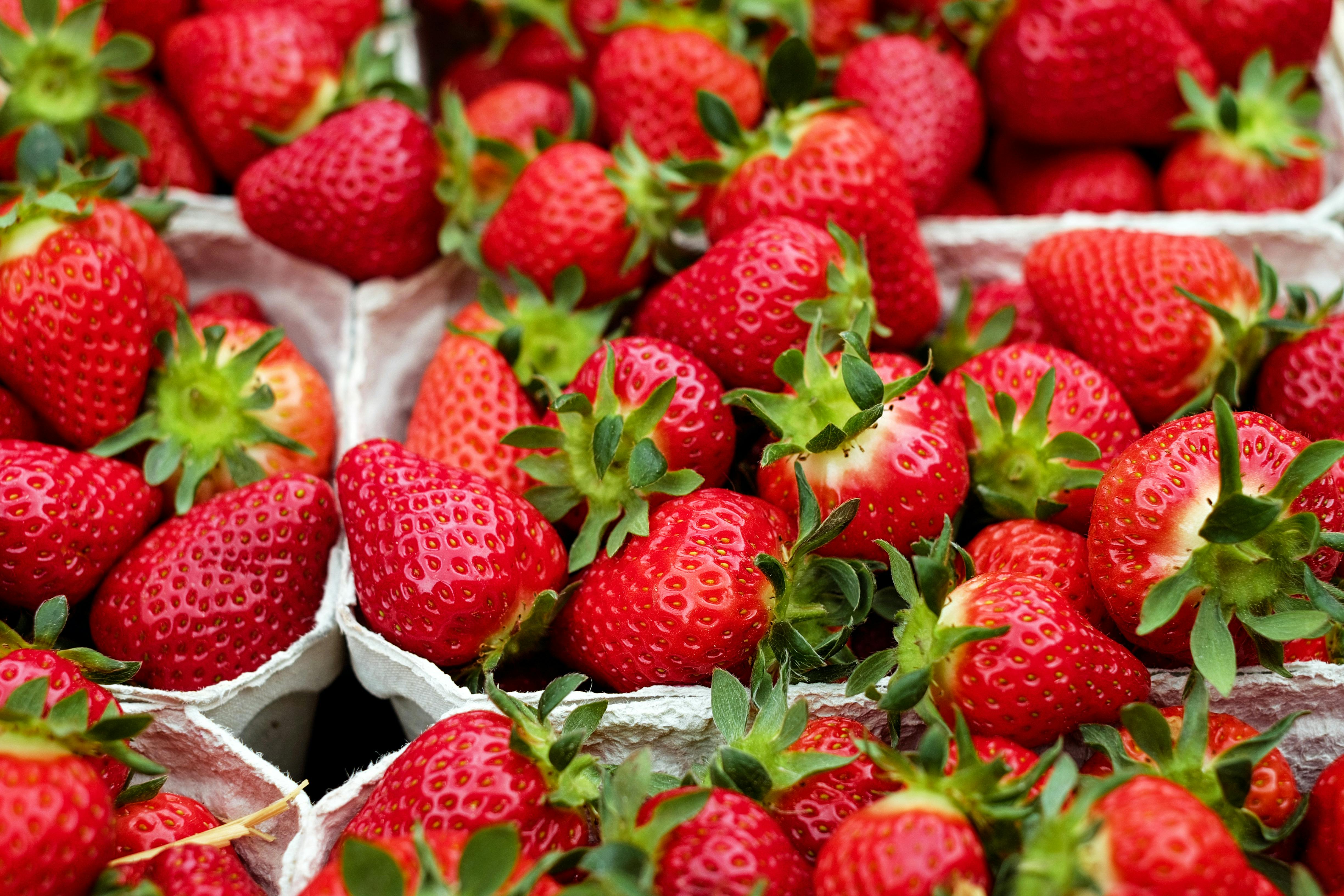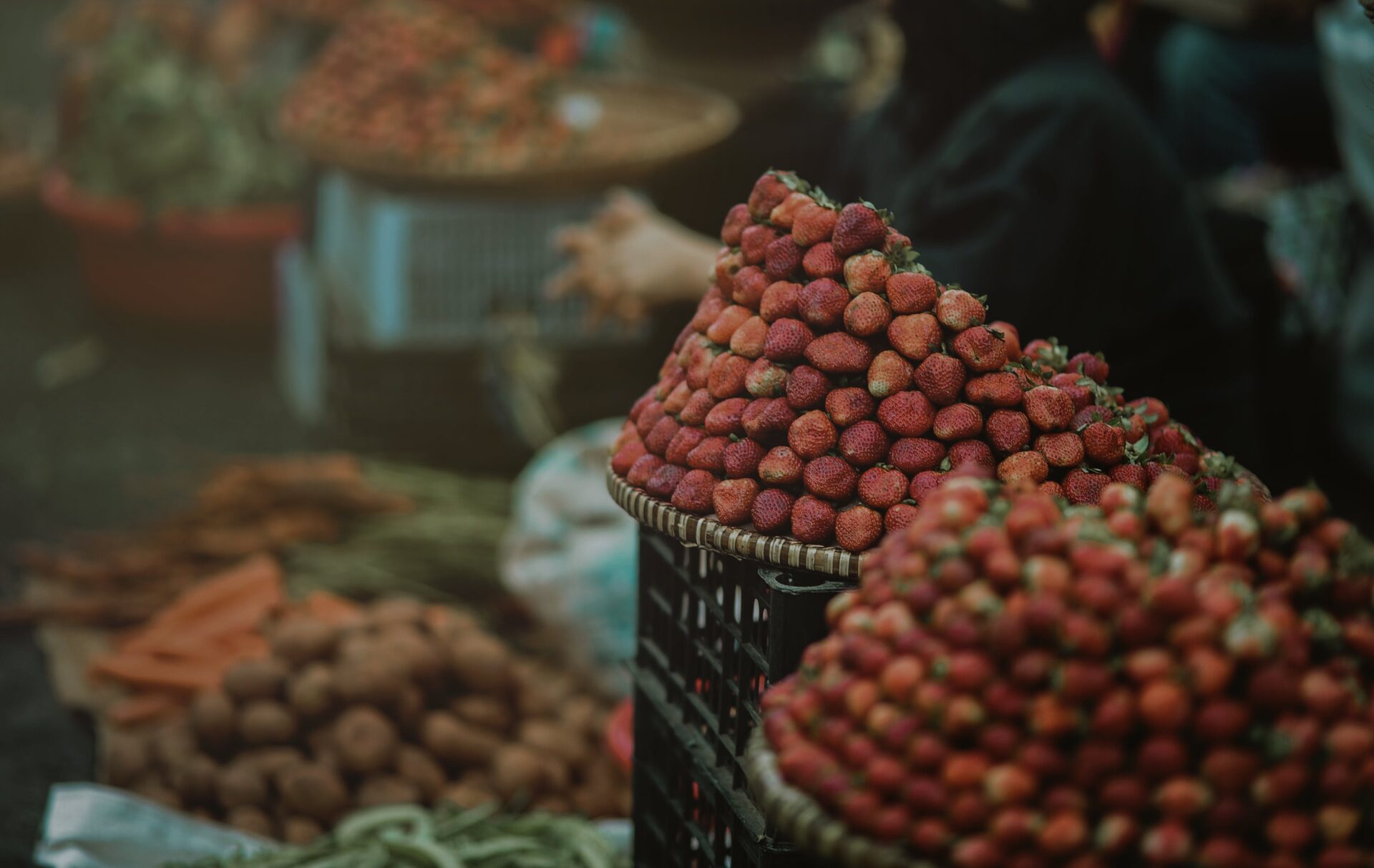Have you ever noticed that there are sometimes no strawberries in stores? You may be wondering why this happens and what could be the possible reasons. In this article, we will explore some potential explanations for why there are no strawberries in stores. We will look at factors such as seasonality, weather conditions, supply and demand, and other possible causes. By understanding the possible reasons behind the lack of strawberries in stores, we can help ensure that everyone has access to the delicious fruit they love.One possible reason for a low strawberry supply is due to unfavorable weather conditions. A lack of adequate rain, extreme temperatures, and the presence of pests can all inhibit the growth of strawberries. Additionally, soil that is too acidic or too alkaline can also lead to decreased strawberry production. Other reasons for a low strawberry supply may include inadequate pollination, poor irrigation systems, and improper planting techniques. In some cases, a shortage may also be caused by a high demand for strawberries which may not be able to be met by farmers.
Impact of Weather on Strawberry Supply
Strawberries are a popular and widely consumed fruit across the world, with their sweet flavor and bright red color. However, the availability of strawberries is heavily impacted by weather conditions. Unfavorable weather can lead to a decrease in the strawberry supply, resulting in higher prices for consumers.
Temperature is one of the most important factors that affects strawberry production. When temperatures become too low, it can damage the flowers and inhibit pollination, resulting in fewer strawberries being produced. On the other hand, high temperatures can cause berries to ripen too quickly or become overheated, leading to a lower quality product. Additionally, extreme weather events such as droughts and floods can have a significant impact on strawberry supply and prices.
Weather also affects the amount of sunlight available to strawberries during their growing season. If there is not enough sunlight, it can limit photosynthesis and cause poor growth or even death of the plants. In addition, too much sunlight can damage berries by causing them to overheat or dry out prematurely.
Finally, rain is also an important factor in strawberry production as it helps provide moisture for plants to thrive. Too much rain can cause fungal diseases which can damage crops while too little rain may lead to drought-like conditions which could reduce yields significantly.
In conclusion, weather plays an important role in determining how much strawberry supply is available for consumers each year. Unfavorable temperature changes or extreme weather events such as floods or droughts could lead to reduced yields and higher prices for consumers. Therefore it is essential that farmers are aware of changing weather patterns so they can plan accordingly and ensure adequate supplies of strawberries throughout the year.
What Causes Poor Strawberry Yields?
Strawberry yields can be adversely affected by a variety of factors, including weather conditions, soil fertility, pests and diseases, improper planting and harvesting techniques, and inadequate water and nutrient management.
Weather conditions such as extreme cold or heat can damage the crop, as can periods of excessive rain or drought. Poor soil fertility can lead to a decrease in yields due to a lack of essential nutrients for the plants. Pests and diseases are also responsible for poor yields if left unchecked.
Improper planting and harvesting techniques can also lead to reduced yields. For example, if the strawberry plants are planted too closely together, they will compete for resources such as sunlight, water and nutrients from the soil. If the plants are harvested too early or too late, this can also lead to lower yields.
Finally, inadequate water and nutrient management can result in poor strawberry yields. If the plants are not given enough water or nutrients they will struggle to produce fruit. To ensure good yields it is important to provide adequate amounts of both water and nutrients throughout the growing season.
Effects of Pests on Strawberry Yields
Pests can have a significant impact on strawberry yields. Different pests may feed on the fruit, weaken the plant, or carry diseases that can affect the health and productivity of strawberries. It is important for farmers to be aware of these potential threats and take steps to mitigate them.
One of the most common pests that can affect strawberry yields is aphids. These small insects feed on the juice from strawberry plants, which can weaken the plant and reduce its ability to produce fruit. Furthermore, aphids can spread diseases such as powdery mildew, which can also reduce yields and overall plant health.
Another pest that can be problematic for strawberry farmers is snail and slug damage. These creatures feed on leaves and fruits, which can significantly reduce yields. Additionally, they can carry diseases such as root rot which affects both the roots of the plant as well as its overall health and productivity.
Finally, birds are another common pest that affects strawberry yields. While birds do not directly feed on plants or fruits, they do compete with farmers for resources such as water and nutrients in the soil which can reduce yields. Additionally, birds can spread diseases via their droppings that may weaken plants or decrease their productivity.
In order to protect their crops from pests, farmers should practice integrated pest management methods such as using insecticides and natural predators to control populations of harmful insects or animals. Additionally, they should practice crop rotation to prevent build up of pests in any one area over time and use physical barriers such as netting to keep birds away from their crops.
Farmers should also regularly inspect their plants for signs of infestation or disease so they can quickly identify any potential problems before they cause too much damage. By taking these steps farmers can ensure that their strawberries are protected from pests which will help maintain high yields year after year.
The Role of Soil Quality in Low Strawberry Yields
Strawberry yields are dependent on many environmental factors, with soil quality being one of the most important. Poor soil quality can lead to decreased yields, reduced quality, and a greater risk of crop losses due to disease and pests. In order to maximize strawberry yields and maintain good crop health, it is important to understand how soil quality affects strawberry production.
Soil is made up of several components, including organic matter, minerals, and water. Each of these components has an important role in providing nutrients and improving soil structure. Organic matter provides food for beneficial microorganisms that help break down nutrients for plants to use. Minerals provide essential nutrients for plants to grow and develop healthy roots and foliage. And water helps keep the soil moist so that it can absorb more nutrients from the air and surrounding environment.
When soil quality is poor, many of these key components are lacking or not present at adequate levels. This can lead to a decrease in strawberry yields as plants may struggle to get the nutrients they need from poor-quality soil. Additionally, poor soil can lead to increased risks of diseases as it may not be able to support beneficial microorganisms or provide enough protection against pests.
There are several ways to improve soil quality for strawberry production. Adding organic matter such as compost or manure can help increase nutrient levels and improve overall structure. Applying fertilizer regularly can also add essential nutrients that help promote healthy growth and development in strawberries. Additionally, using mulch or cover crops can help protect against weeds and retain moisture so that plants get all the water they need for optimum yield potentials .
Overall, understanding the role of soil quality in strawberry production is essential for maintaining high yields and healthy crops over time. By taking steps such as adding organic matter, applying fertilizer regularly, mulching or using cover crops when needed – producers can ensure their soils remain healthy and their strawberry yields remain high over time.

The Potential Impact of Disease on Strawberry Supply
Strawberries are a popular and nutritious addition to many diets. However, like with any kind of crop, strawberries are vulnerable to disease and pests. If diseases spread throughout a berry farm, it can significantly reduce the amount of available fruit and cause prices to rise. This can have a major impact on strawberry supply and availability in the market.
There are a number of diseases that affect strawberry plants, which can range from mild to severe in severity. The most common types of diseases include Fusarium wilt, Verticillium wilt, Botrytis gray mold, powdery mildew, and anthracnose. These diseases can cause leaves to yellow or wilt, reduce yields, and even kill the entire plant if left untreated.
In order to prevent the spread of disease in strawberry crops, farmers must take certain precautions. This includes regularly inspecting plants for signs of disease and removing any diseased parts from the plants as soon as possible. Additionally, farmers should use proper fertilization techniques and ensure that irrigation methods are appropriate for their particular crop. It is also important to rotate crops in order to reduce the risk of spreading disease between different fields.
If disease does spread through a berry farm or regionally, it can significantly reduce both yields and quality of fruit available for sale in markets. This could lead to higher prices for consumers or even shortages in some areas if production is unable to meet demand. Additionally, farmers may be forced to invest additional resources into treating their crops or may be forced out of business if they cannot effectively manage their crops due to severe outbreaks of disease.
Overall, it is important for farmers and consumers alike to be aware of the potential impact that diseases can have on strawberry supply and availability in markets around the world. By taking proper precautions such as regular inspection for signs of disease and implementing effective management strategies such as crop rotation, farmers can help prevent losses due to disease outbreaks while ensuring that there is enough supply available for consumers at reasonable prices.
Climate
Climate is a major factor that affects the cost of strawberries. Depending on the weather conditions, strawberry crops can either be plentiful or scarce. If the climate is warm and sunny with adequate rainfall, then strawberries will be plentiful and the cost will be low. On the other hand, if the climate is too hot or too cold for too long, or if there is not enough rainfall, then it can result in a decrease in production and an increase in prices for consumers.
Soil Quality
The quality of the soil also influences strawberry prices. If the soil has good drainage and rich nutrients, then strawberries are likely to grow well and produce high yields. However, if the soil is poor quality with inadequate drainage and poor nutrient levels, then production may suffer resulting in higher costs for consumers.
Season
The season also affects strawberry prices since different varieties of strawberries ripen during different times of year. For example, some strawberry varieties ripen early in spring while others ripen later in summer or even into fall. Therefore, when strawberries are scarce due to seasonality, their cost increases accordingly.
Supply & Demand
Finally, supply and demand also affect strawberry prices. When demand for strawberries increases but supply remains low due to any number of factors discussed above (climate conditions, soil quality etc.), then prices will naturally increase as well. On the other hand, when demand decreases but supply remains high due to favorable growing conditions then prices may decrease accordingly.
Transportation Costs and Availability of Strawberries
Strawberries are a popular fruit, enjoyed all over the world. They are highly perishable, so transportation costs and availability of strawberries depend on the season and geographical location. During the spring and summer months, when strawberries are in season and widely available, transportation costs can be much lower than during the winter months when they are not as widely available.
The majority of strawberries that enter the market are picked from local farms. The cost of transporting these berries is relatively low because they do not have to travel far from their source. However, if strawberries need to be transported from a distant location, transportation costs can be high due to the distance and potential delays in delivery.
When it comes to availability, local farmers can provide a steady supply of strawberries during the season which helps keep prices down for consumers. However, when it comes to buying out-of-season strawberries or those sourced from farther away locations, prices may be higher due to transportation costs and limited availability.
Overall, transportation costs play an important role in determining the availability and price of strawberries. During peak season, when local farmers are providing a steady supply of fresh berries, prices tend to be lower due to lower transportation costs. However, during off-season or when sourcing from distant locations, prices may be higher due to higher transportation costs.

Conclusion
The shortage of strawberries in stores is a complex issue with many possible causes. The weather has a major impact on the availability of strawberries, as droughts and extreme temperatures can reduce or even eliminate entire harvests. Pests, diseases, and other environmental factors can also contribute to shortages. In addition, market demand and the global economy can also affect the availability of strawberries in stores.
Ultimately, there is no one definitive answer as to why there are no strawberries in stores. It may be a combination of multiple factors that have caused this shortage. Understanding these factors can help us better plan for future shortages and ensure we have access to strawberries year-round.



